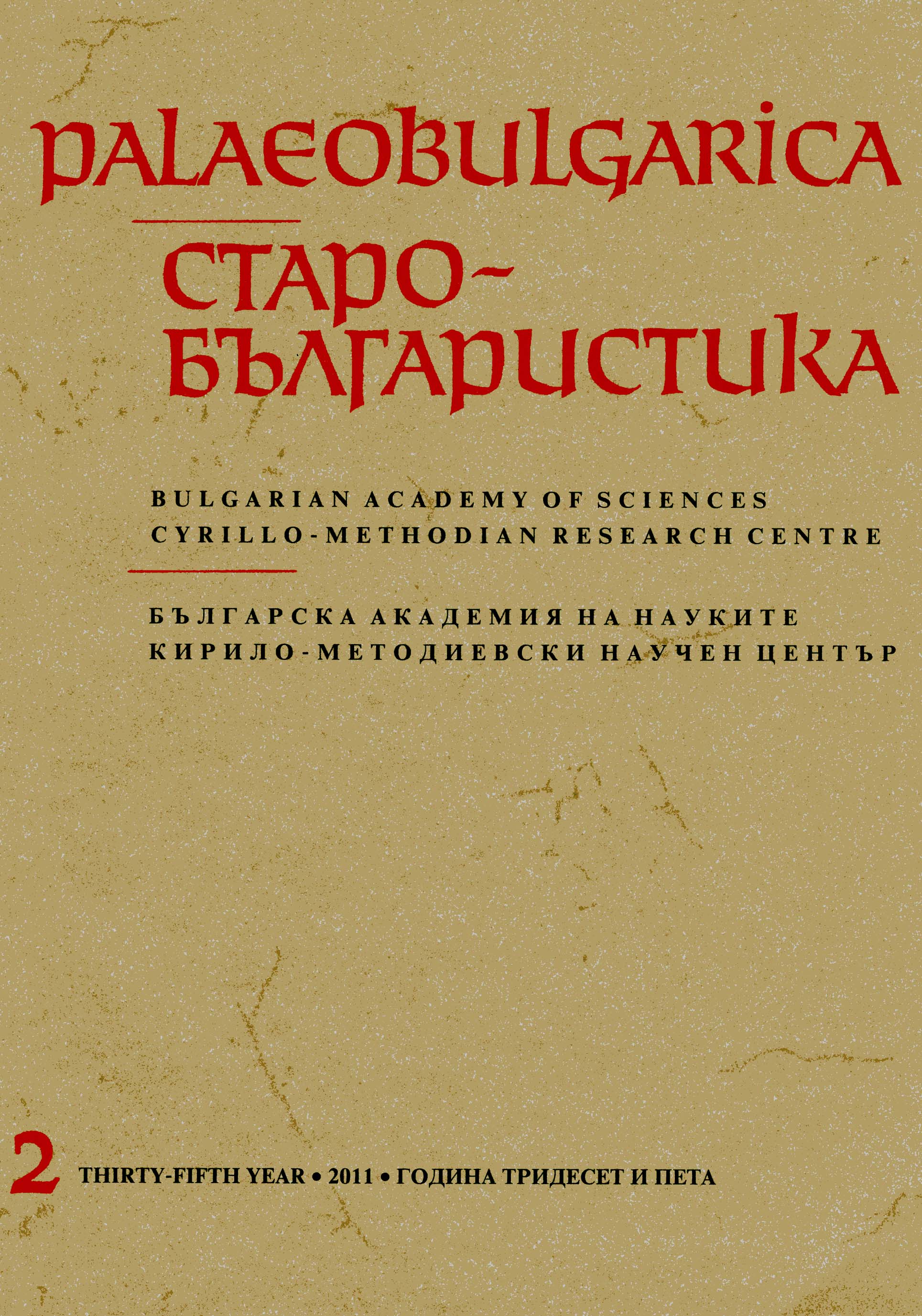Румънци и славяни на Света гора през 1416 г.
Romanians and Slavs on Mount Athos in AD 1416
(Notes on the History of the Selina Hermitage)
Author(s): Georgi Parpulov, Ralf CleminsonSubject(s): Language and Literature Studies, Middle Ages
Published by: Кирило-Методиевски научен център при Българска академия на науките
Summary/Abstract: The above is an edition and analysis of a document kept in the archive of the Zographou Monastery on Mount Athos and discovered there by the Bulgarian church historian Mikhail Kovachev, who published a photograph of it in 1943. It reads, in full English translation: "In the year 6924 [AD 1416], Indiction 9, on the 22nd of August, our father and brother Hieromonk Kyr Dometianus and Jupan Mudracica came to the Monastery of the Holy and Glorious Victory-Bearing Great Martyr George named Zographou, having been sent by the pious and Christ-loving Voivode John Alexander and his son Voivode Elias, sovereign of the Land of Moldavia and the Sea Coast, our ktetor and benefactor. And the priest Kyr Dometianus arranged with the abbot priest Kyr Niphon, the gerontes and all the brethren that Selinas be given to him, so that it be in his possession and that of the Bistrita Monastery during the priest Kyr Dometianus's lifetime, and after his death whoever is in the Bistrita Monastery is to own the Selinas [Tower]. And we gave him the Epikernes's Vineyard, as well as the olive trees found in it, and the orchard below the tower as far as the upper citron trees. Be it bitter orange or olive that his brethren wish to plant in the field, let none of the monastery brethren attempt to hinder them or take from them as much as a single olive. And let the fenced olive trees around the tower, and the 12 olive trees at the edge of the vineyard below the tower also be in his possession, and let no one else dare hinder the priest Kyr Dometianus's brethren or argue with them. And it is up to the priest Kyr Dometianus how many of his brethren he is going to settle. [So much] about the Selinas Tower. Within the monastery we give him Petsikuts's cell, and the cell below the tower where the priest Kyr Damian dwells, and Nicodemus's wine cellar below it, and Nicodemus the Vlach's vineyard. And outside the monastery, below the cell that we gave him - the orchard that priest Damian owns and Calybites's orchard, all of this we have given to the priest Kyr Dometianus as his and his brethren's property. And let the priest Kyr Dometianus hold all of the above in his possession during his lifetime, and let no one, neither emperor, not ruler, nor the abbot (whoever that is going be), nor any other official, be allowed to hinder him in anyway even unto his death, and after his death let it belong to the Bistrita Monastery. This record is witnessed by: the Protos of the Holy Mountain Hieromonk Macarius; the abovementioned abbot priest Kyr Niphon; father-confessor priest Kyr Paisius; the most reverend abbot Hieromonk Sophronius who had come at the time from the pious Voivode Mircea and from his monastery named Cozia; the former abbot priest Kyr Cyril; father-confessor priest Kyr Damian; priest Cassian; priest Sylvester; Geron priest Cyril and the other Geron Cyril; Geron Neophytus; Simon; Calybites; Euthymius; Antony; Joannicius; Dionysius; Athanasius; Gregory Pititsa and all the rest of the brethren. This record is unanimously approved by both parties, and let it remain undisputed and firm. Whoever should break his word that we gave to our brother the priest Kyr Dometianus and recorded for as long as the monastery, as well as the Land of Moldavia, stand, anathema to him from the Father, Son and Holy Spirit, and let him be cursed by the 318 God-bearing fathers of Nicaea and by Saint George, and share in the fate of Judas. I, Callistus, who wrote this, also bear witness." The priest Dometianus mentioned in the document may well be identical with the Bistrita and Neamt abbot of that name attested in AD 1407 and 1415. The fact that Cozia and Bistrita, both of them major monasteries, maintained close ties with Zographou as early as AD 1416, is significant for the history of Romanian culture.
Journal: PALAEOBULGARICA / СТАРОБЪЛГАРИСТИКА
- Issue Year: 2011
- Issue No: 2
- Page Range: 59-64
- Page Count: 6
- Language: Bulgarian
- Content File-PDF

